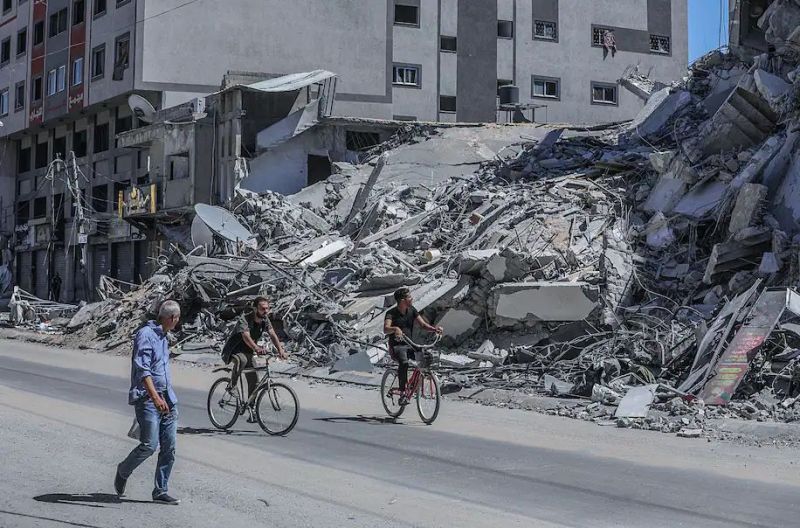
For about a week, President Biden publicly supported Israel’s right to defend itself, laying responsibility on Hamas for firing rockets at civilians and avoiding talk of a cease-fire. That changed Monday, when the White House reported that Biden, in a phone call with Israeli Prime Minister Benjamin Netanyahu, said he would “support” a cease-fire.
Reuters also reported Monday that Egyptian President Abdel Fatah al-Sissi said a cease-fire “between Israel and Hamas might be within reach. ‘Egypt is going to great lengths to reach a ceasefire between the Israelis and Palestinians — and hope still exists that a collective action could end the conflict,’ he said in an interview to the Al Arabiya news outlet.”
House Speaker Nancy Pelosi (D-Calif.) issued a similar statement on Tuesday urging a cease-fire for the first time, while also defending Israel’s right to self-defense. “Now, after more than a week of hostilities, it has become even more apparent that a ceasefire is necessary,” she said. “There must be a serious effort on the part of both parties to end the violence and respect the rights of both the Israeli and Palestinian people.”
On Wednesday, Biden spoke again to Netanyahu. According to the White House readout, “The President conveyed to the Prime Minister that he expected a significant de-escalation today on the path to a ceasefire.”
This follows a carefully scripted approach. The United States and the European Union know Israel must be given initial leeway to strike back at Hamas. Premature attempts to try forcing an early end to the conflict would have likely resulted in failure, as putting “daylight” between the United States and Israel early on would have increased friction and probably hindered the influence of U.S. officials. But as Israel runs through its list of targets, pressure is building for Israel to draw things to a close. In essence, the United States and Europe are saying, “Okay, you have made your point.”
Complaints that Biden’s statements have not appropriately reflected the suffering of Palestinians fail to appreciate the intricate dance needed to bring these things to an end. On Monday, White House press secretary Jen Psaki tried to explain to reporters that “every single action we take, every statement we make is with the objective of reducing the violence and bringing an end to the conflict on the ground.” She added, “There are times, in diplomacy, where we’ll need to keep those conversations quieter, where we won’t read out every component of it. But that is our objective and that is the prism through which every action and every comment is being made.”
In other words, what Biden says and does not say are intentional and based on the White House’s best assessment of what it will take to bring the violence to a halt. The 2014 war between Israel and Hamas that went on for 50 days is an example of failing to get the balance of inside-outside pressure right. The result was an extended war that neither side was prepared for.
With no agreed-upon truce, too many U.S. media pundits have pronounced that Biden has “failed” or that diplomacy is not working. The reality is that this is what “working” looks like. It is an ongoing process, the success of which will be determined by how quickly both sides agree to relent.
But the larger problem endures. The occupation of Gaza by a terrorist group means there are truces but no lasting peace. “We can put Hamas on the defensive,” Middle East veteran negotiator Dennis B. Ross told me in an interview. “To do so, we need to launch an initiative in which we commit to mobilizing an international plan to reconstruct, massively, the infrastructure and housing in Gaza.” He added: “Spell the plan out with tangible projects, showcase European, Asian and Arab support for it, and state the obvious: no one can invest in such a massive undertaking if Hamas keeps its rockets (or can rebuild them) because sooner or later they will again use their rockets at a time of their choosing and the next war will literally explode the investment.”
If Hamas chooses rockets over massive aid, its grip on Gaza may weaken. “It is up to Hamas,” Ross said. “Let Hamas explain to the international community and their own public why Gaza must be condemned to deep impoverishment.” Hamas cannot be ejected from Gaza, but we can at least help put it on the defensive.
Jennifer Rubin writes reported opinion for The Washington Post.
